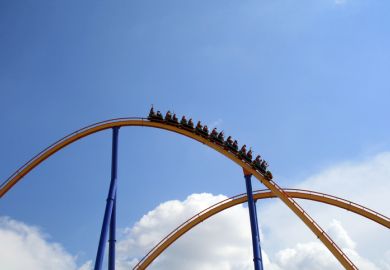Information is presented to us on every side. Some of it we value, some of it we discard. Some of it we seek out, some of it thrusts itself upon us. There is a continual problem in making choices about information - to keep or not to keep. Traditionally, valueless information has been known as noise. It looks like the real thing, but at best adds no value, and at worst obscures the desired message.
Only if information was inexhaustible would it be possible to predict thermodynamic processes sufficiently to remove all added noise. Eventually more information is needed about the noise process than is recovered by the noise reduction. Separating signal from noise takes effort.
Experimental science consists of asking questions of the natural world. Answers comes in the form of measurements having a limited amount of information accompanied by unavoidable noise. It seems therefore quite appropriate to treat measurement science and information theory in a single volume.
In the information age at the turn of the millennium, the problem is getting worse. An expert may tell a client useful information about how to avoid time-wasting exercises on the Internet or in the library. He will advise on how to recognise valuable information which is masquerading as noise, or deliberately hidden from view by some kind of encryption or coding system. The expert represents an overhead on the system - he does not come free.
Information producers come in various guises. They all have the goal of conveying their message accurately and unambiguously to the receivers. Sometimes they do this inefficiently, by repetition. Often there is a trade-off between robustness and economy, or between robustness and security. To communicate effectively, it is necessary to understand the limitations of channel and receiver. Allowances may then be made in the information transmission scheme. This is the task of the communications specialist.
In his book Jim Lesurf has transmitted his message with economy and effectiveness. The book is easy and fun to read, and covers a wide range of topics about which the modern communications engineer needs to know. There is a weakness apparent to this reviewer; the chapter on the relationships between noise, chaos and information digresses needlessly into electronics and misses the points which relate information to predictability. Apart from this quibble the book transmits information at a pleasingly high rate of data, requires few pauses for rereading, and gives an idiosyncratic and novel view of a subject that is central to modern social existence.
In hardback only, at £50, the book is too expensive to sell well to its principal readership which probably consists of undergraduates. One hopes the publishers will produce a paperback version at about £12; after all, it is not a long book and, according to the credits, the desktop publishing software used to write it (which will have taken out some production costs) made the book "a pleasure to write".
David Jefferies is senior lecturer in engineering, University of Surrey.
Information and Measurement
Author - J. C. G. Lesurf
ISBN - 0 7503 0308 5
Publisher - Institute of Physics Publishing
Price - £50.00
Pages - 243
Register to continue
Why register?
- Registration is free and only takes a moment
- Once registered, you can read 3 articles a month
- Sign up for our newsletter
Subscribe
Or subscribe for unlimited access to:
- Unlimited access to news, views, insights & reviews
- Digital editions
- Digital access to THE’s university and college rankings analysis
Already registered or a current subscriber? Login


